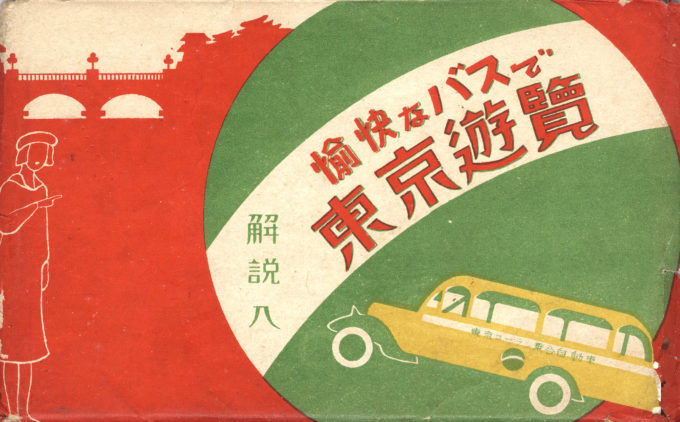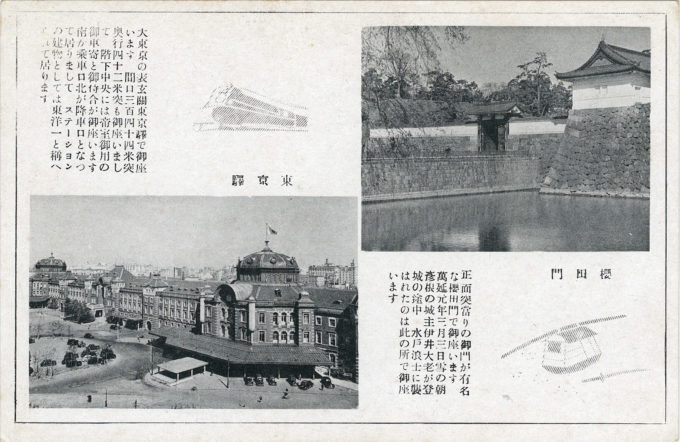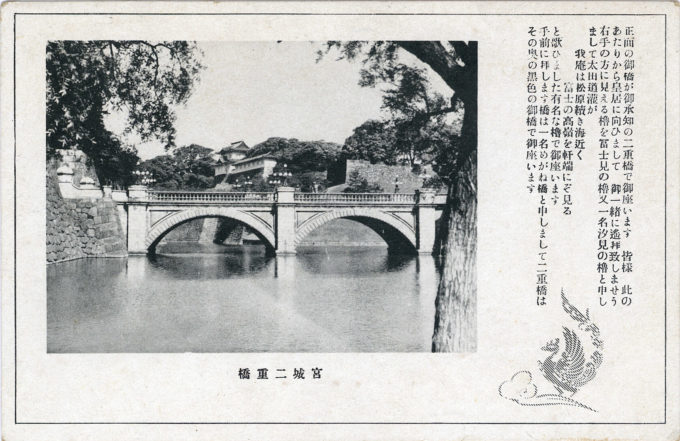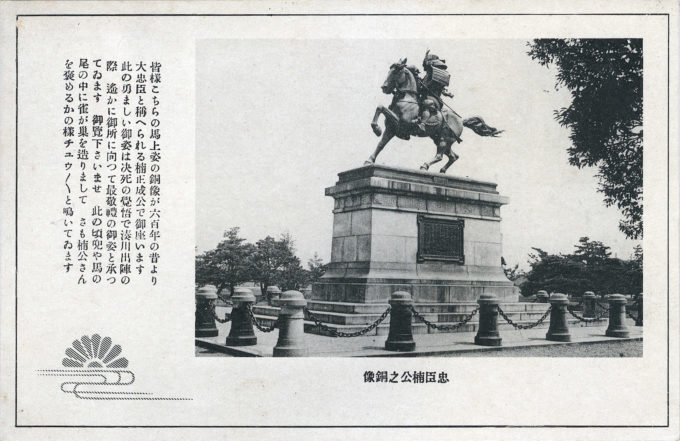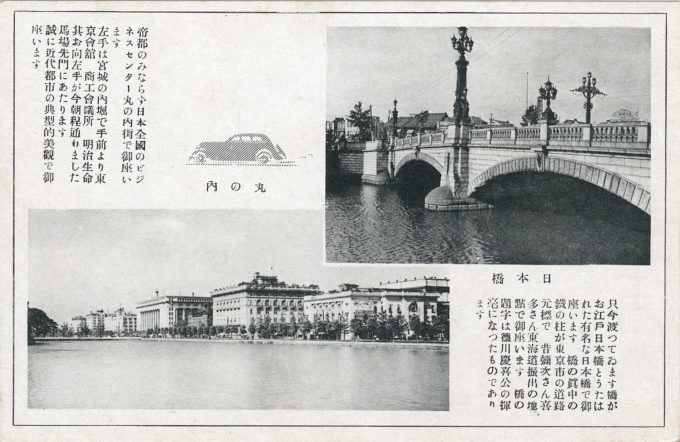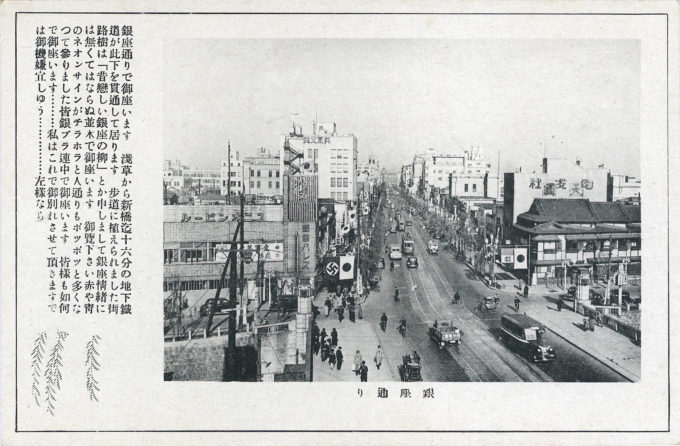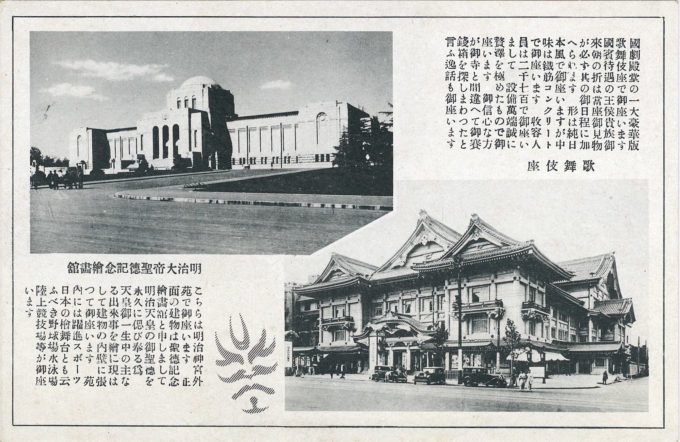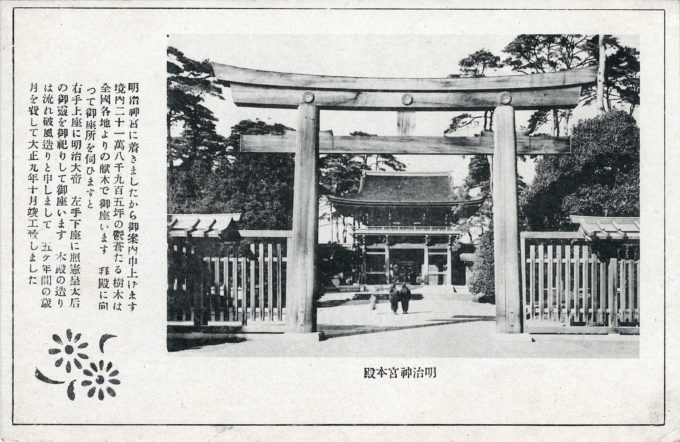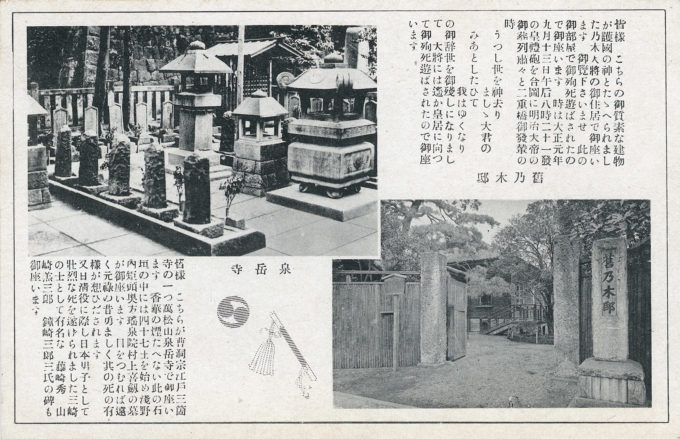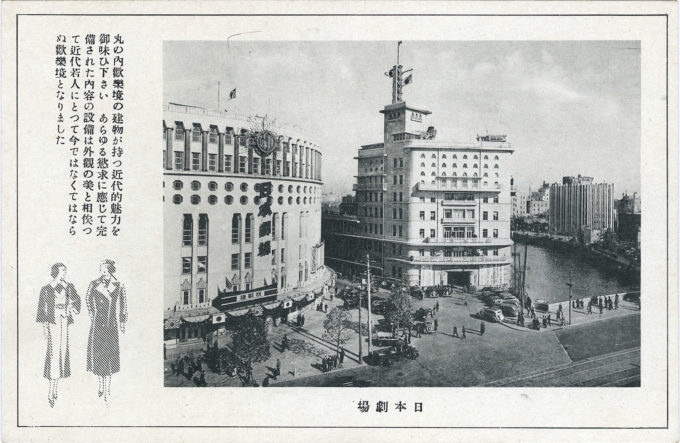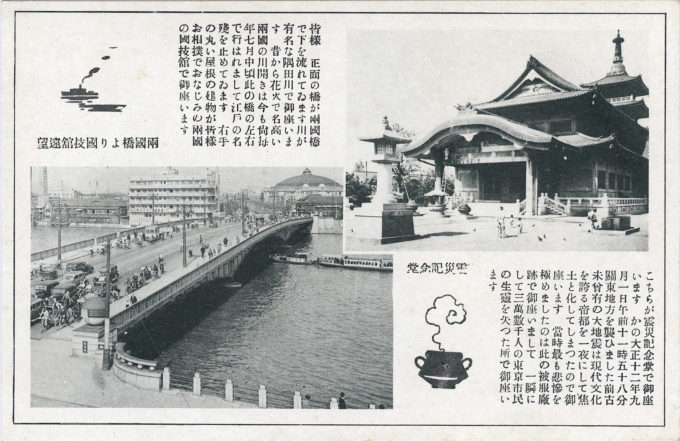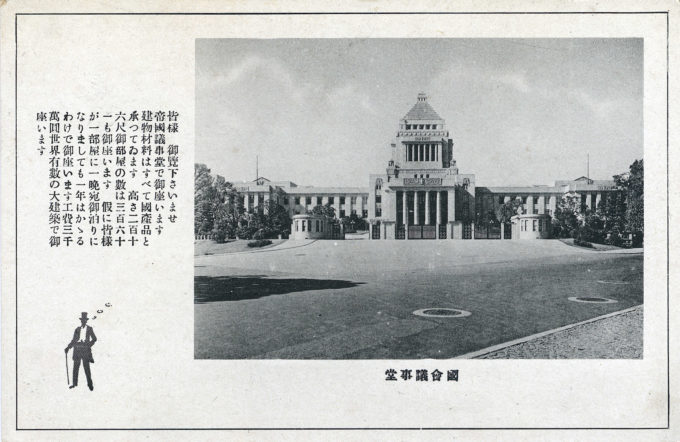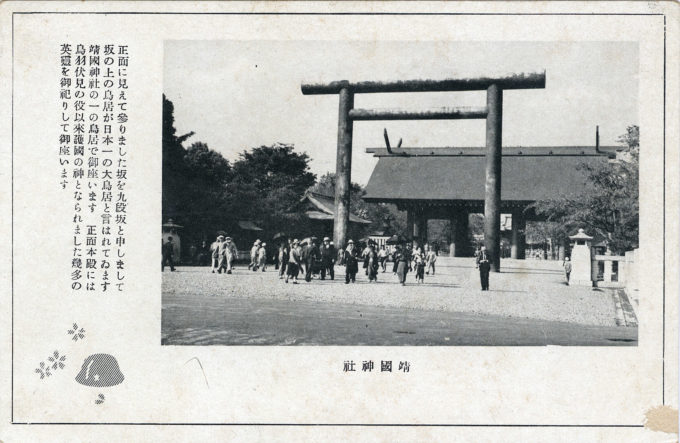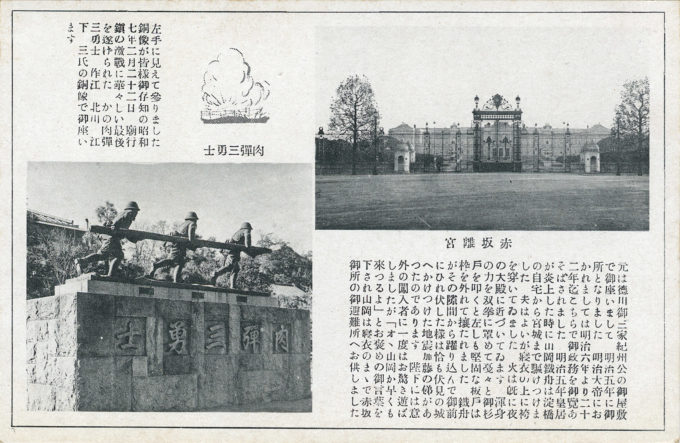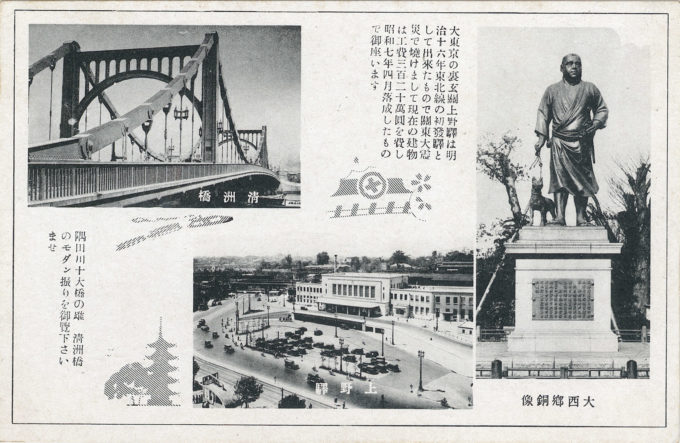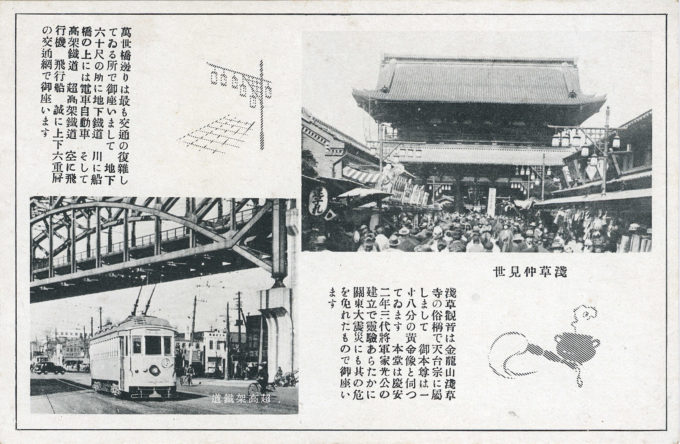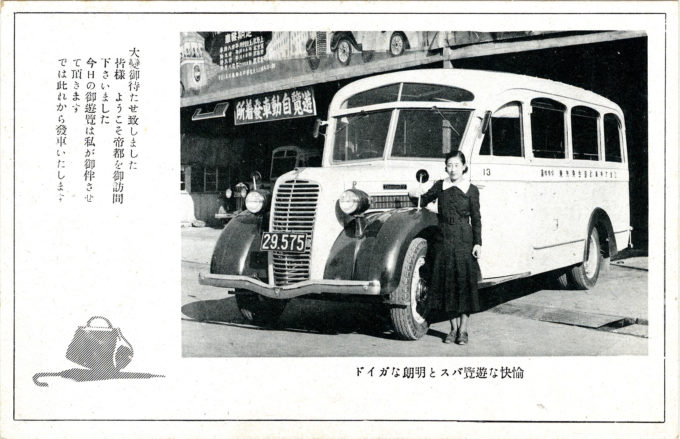
“Pleasant promenade buses and clear guided tours”, Tokyo Motorbus Co., Tokyo, c. 1940. “Thank you for waiting. I will be accompanying you on your excursion today. We will be leaving shortly.” Tokyo Motorbus Co, first began offering guided tours of Tokyo in 1926. To differentiate them from the company’s blue-colored route buses, its tour buses were originally painted a reddish-brown That livery was later changed to yellow because the particular shade of red and brown was thought to be too similar in color to the Imperial Household vehicle livery.
See also:
Tokyo Motorbus Co. “Yellow Bus”, c. 1940.
Tokyo Sightseeing Bus Co. advertising postcards, Tokyo, c. 1930.
“Beginning on June 17, 1926, Tokyo Motorbus offered half-day tours on set routes to avoid the hassle of collecting fares at each destination.
“During the 1930s, additional bus companies sold an increasing variety of tours, including a night ride in 1937 that ended after a few months because of the [Sino-Japanese] war and resumed in 1951.
“… Advertisements for the first bus tours promoted a look at Tokyo reconstruction after the 1923 Great Kanto Earthquake and at the vestiges of old Edo, the city that became Tokyo, all expertly explained by a guide, who was a major selling point of the tour.
“Originally, bus guides were male graduates of top universities, who earned high salaries. After female bus guides were first used on tour buses in Beppu, a hot-springs town on the southernmost island of Kyushu, in 1927, only women were hired for the position. A main reason was that they could be paid much less than men and, like bus conductors, they were believed to be kinder to passengers.
“That year [1927], Tokyo Motorbus replaced its male guides with women chosen from the ranks of Blue Bus conductors. Qualifications for being a female guide, especially from around 1932, included having a residence in Tokyo and having finished high school. Then, as now, applicants took an examination, which includes written and oral components.
“… The Tokyo metropolitan police banned tour buses in September 1940 because of gasoline rationing and war damage, but city government encouraged their resumption in the years following the war and during the Allied Occupation.
“During the war, women continued working as bus conductors and even served as drivers.”
– Modern Girls on the Go: Gender, Mobility and Labor in Japan, edited by Alisa Freedman, Laura Miller & Christine R. Yano, 2013
Sample Tour Bus Itinerary
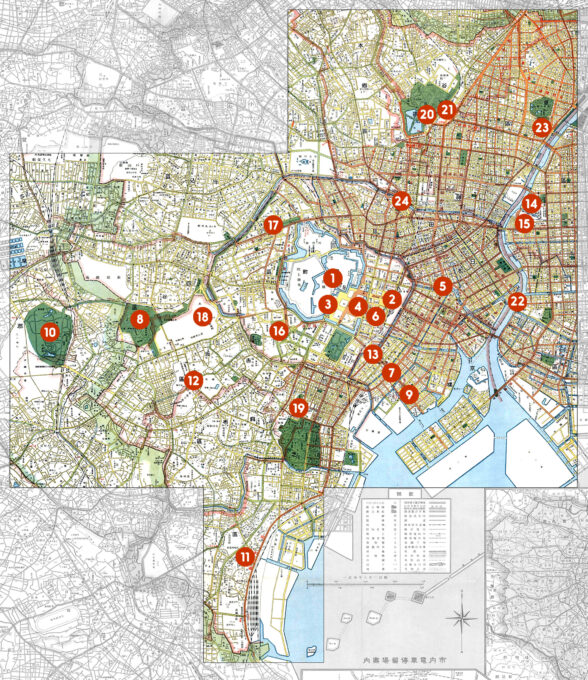
Map (above): Tokyo Motorbus Co. “Yellow Bus” tour destination locations, c. 1940,
corresponding to the gallery below.
- “Tokyo sightseeing”, Tokyo Motorbus Co. package cover, c. 1940.
- 1. Imperial Palace. 2. Tokyo Central Station.
- 3. Nijubashi.
- 7. Ginza-dori.
- 10. Meiji Shrine.
- 11. Sengakuji Temple. 12. General Nogi residence.
- 13. Nichigeki Theater (left) & Asahi Shimbun Building.
- 14. Earthquake Memorial Hall. 15. Ryokoku Bridge and Kokugikan.
- 16. The Imperial Diet.
- 17. Yasukuni Shrine.
- 18. Akasaka Palace. 19. “Three Bomb Warriors” Memorial (Seishoji Temple)
- 20. Statue of Saigo. 21. Ueno Station. 22. Kiyosu Bridge.
- 23. Asakusa Sensoji. 24. Manseibashi.


